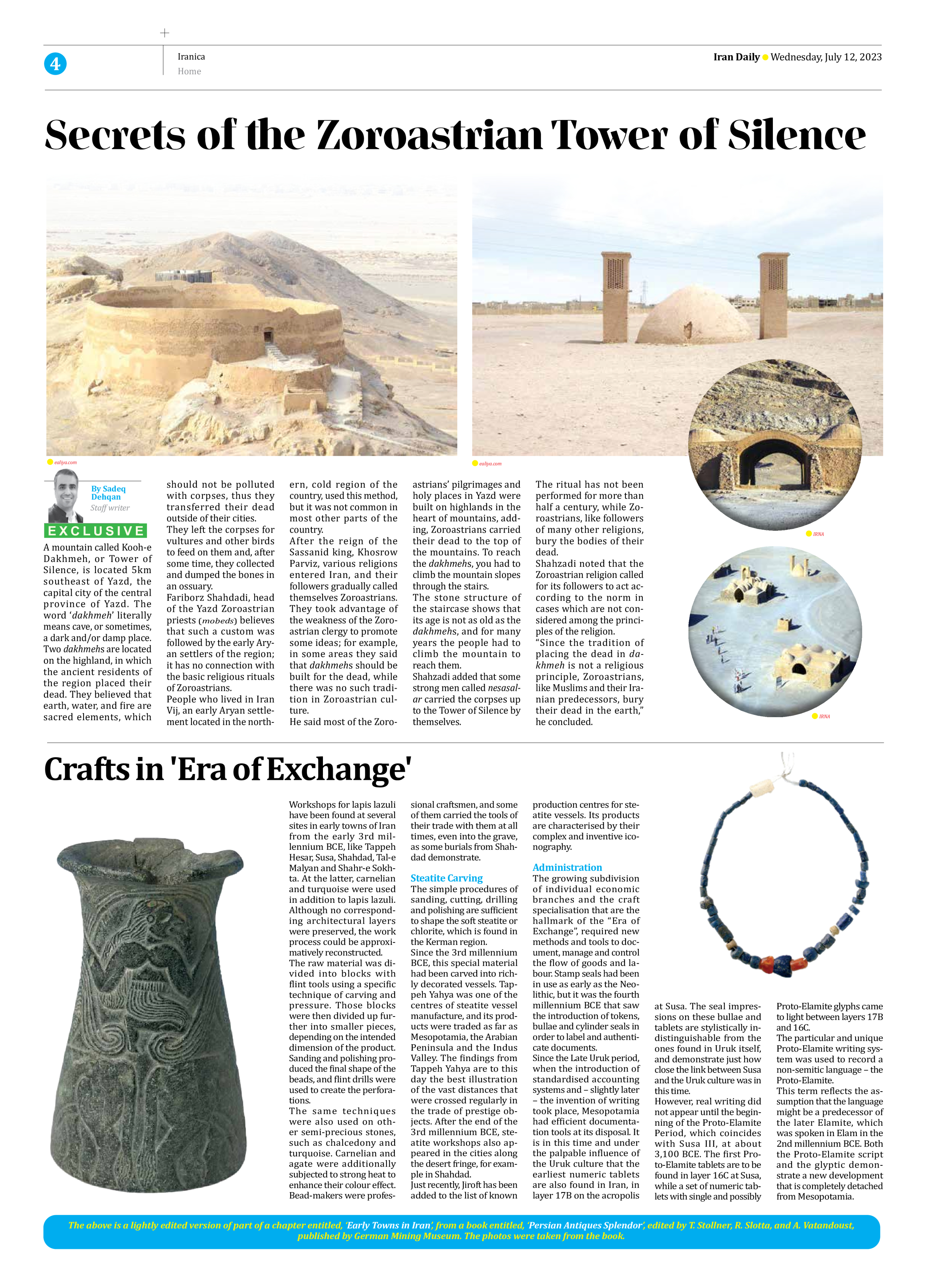
Crafts in ’Era of Exchange’
Workshops for lapis lazuli have been found at several sites in early towns of Iran from the early 3rd millennium BCE, like Tappeh Hesar, Susa, Shahdad, Tal-e Malyan and Shahr-e Sokhta. At the latter, carnelian and turquoise were used in addition to lapis lazuli. Although no corresponding architectural layers were preserved, the work process could be approximatively reconstructed.
The raw material was divided into blocks with flint tools using a specific technique of carving and pressure. Those blocks were then divided up further into smaller pieces, depending on the intended dimension of the product. Sanding and polishing produced the final shape of the beads, and flint drills were used to create the perforations.
The same techniques were also used on other semi-precious stones, such as chalcedony and turquoise. Carnelian and agate were additionally subjected to strong heat to enhance their colour effect. Bead-makers were professional craftsmen, and some of them carried the tools of their trade with them at all times, even into the grave, as some burials from Shahdad demonstrate.
Steatite Carving
The simple procedures of sanding, cutting, drilling and polishing are sufficient to shape the soft steatite or chlorite, which is found in the Kerman region.
Since the 3rd millennium BCE, this special material had been carved into richly decorated vessels. Tappeh Yahya was one of the centres of steatite vessel manufacture, and its products were traded as far as Mesopotamia, the Arabian Peninsula and the Indus Valley. The findings from Tappeh Yahya are to this day the best illustration of the vast distances that were crossed regularly in the trade of prestige objects. After the end of the 3rd millennium BCE, steatite workshops also appeared in the cities along the desert fringe, for example in Shahdad.
Just recently, Jiroft has been added to the list of known production centres for steatite vessels. Its products are characterised by their complex and inventive iconography.
Administration
The growing subdivision of individual economic branches and the craft specialisation that are the hallmark of the “Era of Exchange”, required new methods and tools to document, manage and control the flow of goods and labour. Stamp seals had been in use as early as the Neolithic, but it was the fourth millennium BCE that saw the introduction of tokens, bullae and cylinder seals in order to label and authenticate documents.
Since the Late Uruk period, when the introduction of standardised accounting systems and – slightly later – the invention of writing took place, Mesopotamia had efficient documentation tools at its disposal. It is in this time and under the palpable influence of the Uruk culture that the earliest numeric tablets are also found in Iran, in layer 17B on the acropolis at Susa. The seal impressions on these bullae and tablets are stylistically indistinguishable from the ones found in Uruk itself, and demonstrate just how close the link between Susa and the Uruk culture was in this time.
However, real writing did not appear until the beginning of the Proto-Elamite Period, which coincides with Susa III, at about 3,100 BCE. The first Proto-Elamite tablets are to be found in layer 16C at Susa, while a set of numeric tablets with single and possibly Proto-Elamite glyphs came to light between layers 17B and 16C.
The particular and unique Proto-Elamite writing system was used to record a non-semitic language – the Proto-Elamite.
This term reflects the assumption that the language might be a predecessor of the later Elamite, which was spoken in Elam in the 2nd millennium BCE. Both the Proto-Elamite script and the glyptic demonstrate a new development that is completely detached from Mesopotamia.
The above is a lightly edited version of part of a chapter entitled, ‘Early Towns in Iran’, from a book entitled, ‘Persian Antiques Splendor’, edited by T. Stollner, R. Slotta, and A. Vatandoust,
published by German Mining Museum. The photos were taken from the book.







